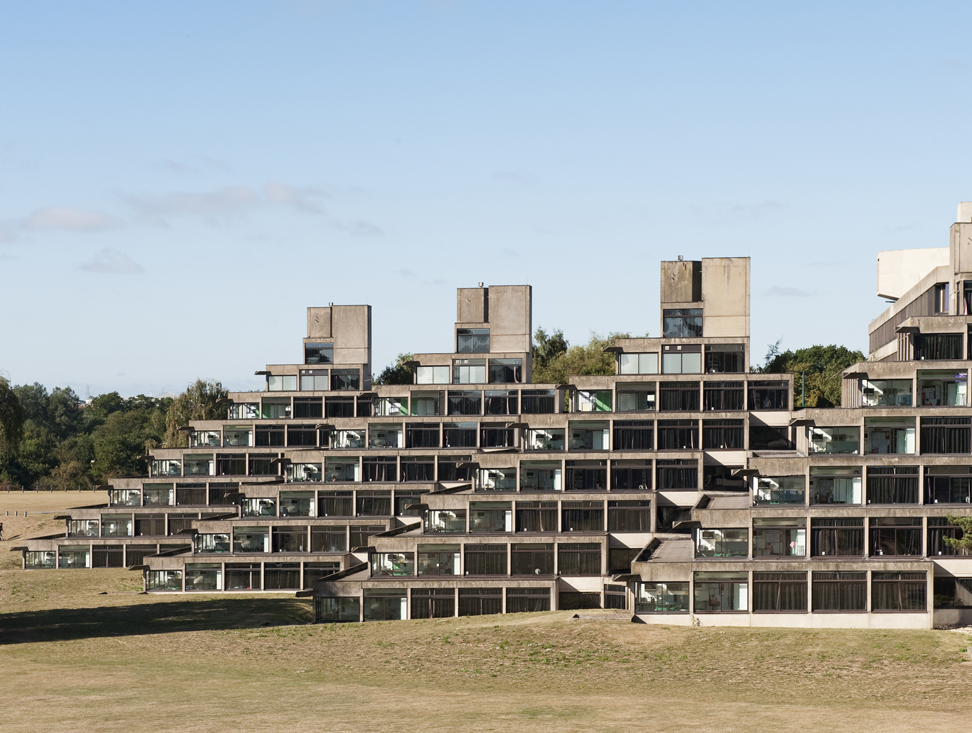Modern building
The term ‘modern’ is an ambiguous one that can be interpreted in a number of ways.
In its widest sense, ‘modern’ refers to things from the present or the immediate past. This may include the adoption of recent techniques, methods or ideas.
In historic terms however, the early modern period is considered to follow the late middle ages of the post-classical era, running from approximately c. 1500 to c. 1800. It is characterised by a period of exploration and globalisation and a move away from medieval systems of politics and economics.
The late modern period follows directly on from this, including the industrial revolution, and runs up to contemporary history, which is considered to include the period from around 1945 to the present day.
Modern architecture and modern buildings however are generally considered to have emerged in the early 20th century and are characterised by the use of glass, steel and reinforced concrete.
This is sometimes associated with the stylistic terms ‘modernism’ or ‘modernist’, however, these have a very specific meaning associated with a design philosophy that focussed on the function of buildings, approached from an analytical viewpoint, a rational use of materials, the elimination of ornament and decoration, and openness to structural innovation.
Modernism developed across all artistic fields, and in architecture encompassed a number of variations, including Futurism, Constructivism, De Stijl, and Bauhaus.
For more information see: Modernism.
Modernism as a style was followed by post-modernism, also known as ‘pomo’; an architectural style that emerged in the late 1960s as a reaction against modernism, which was considered by some to be too bleak, formal and austere. Postmodern architecture is characterised by its highly-decorative, whimsical and kitsch aesethetic. It incorporates stylistic references that are often playful and symbolic, using shape and colour and applying structural forms from classical architecture to modern designs.
For more information see: Post-modernism.
Modern building is sometimes contrasted with ‘traditional building’, a very loose term that typically refers to buildings from before the 20th century.
For more information see: Traditional building.
The phrase 'modern methods of construction' refers to ways of working more effectively to achieve more without using more, and centres around the use of off-site construction techniques that can benefit from factory conditions and mass production techniques. This emerged following the second world war due to the need to replace lost housing quickly, but it has seen renewed focus in recent years due to the modern housing crisis and a desire to reduce costs and improve quality, speed and health and safety.
For more information see: Modern methods of construction.
[edit] Related articles on Designing Buildings Wiki
- Architectural styles.
- Art Moderne.
- Bauhaus.
- BEST Products showrooms.
- Brazilian Modernism lecture.
- City beautiful.
- Contextualism.
- Demolishing Modernism: Britain's lost post-war gems.
- Form follows function.
- High-tech architecture.
- International Style.
- Louis Kahn.
- Modern methods of construction.
- Modernism.
- Neo-futurism.
- Nineteenth century architecture.
- Postmodern architecture.
- Traditional building.
- Zeitgeist.
Featured articles and news
A change to adoptive architecture
Effects of global weather warming on architectural detailing, material choice and human interaction.
How big is the problem and what can we do to mitigate the effects?
Overheating guidance and tools for building designers
A number of cool guides to help with the heat.
The UK's Modern Industrial Strategy: A 10 year plan
Previous consultation criticism, current key elements and general support with some persisting reservations.
Building Safety Regulator reforms
New roles, new staff and a new fast track service pave the way for a single construction regulator.
Architectural Technologist CPDs and Communications
CIAT CPD… and how you can do it!
Cooling centres and cool spaces
Managing extreme heat in cities by directing the public to places for heat stress relief and water sources.
Winter gardens: A brief history and warm variations
Extending the season with glass in different forms and terms.
Restoring Great Yarmouth's Winter Gardens
Transforming one of the least sustainable constructions imaginable.
Construction Skills Mission Board launch sector drive
Newly formed government and industry collaboration set strategy for recruiting an additional 100,000 construction workers a year.
New Architects Code comes into effect in September 2025
ARB Architects Code of Conduct and Practice available with ongoing consultation regarding guidance.
Welsh Skills Body (Medr) launches ambitious plan
The new skills body brings together funding and regulation of tertiary education and research for the devolved nation.
Paul Gandy FCIOB announced as next CIOB President
Former Tilbury Douglas CEO takes helm.
UK Infrastructure: A 10 Year Strategy. In brief with reactions
With the National Infrastructure and Service Transformation Authority (NISTA).
Ebenezer Howard: inventor of the garden city. Book review.
Airtightness Topic Guide BSRIA TG 27/2025
Explaining the basics of airtightness, what it is, why it's important, when it's required and how it's carried out.






















